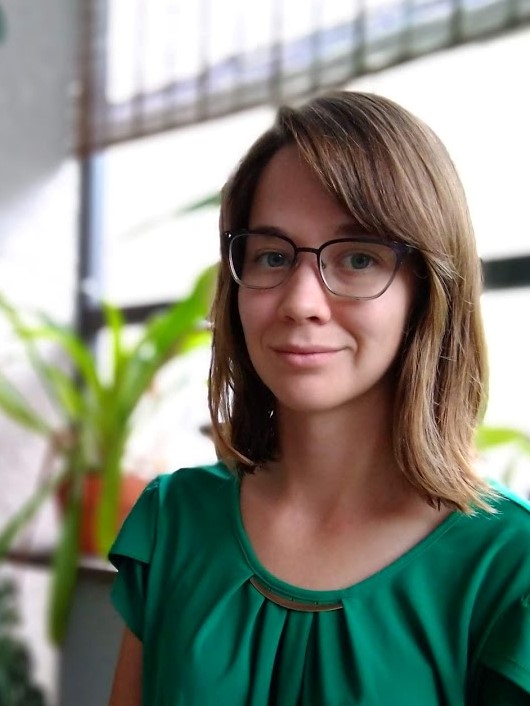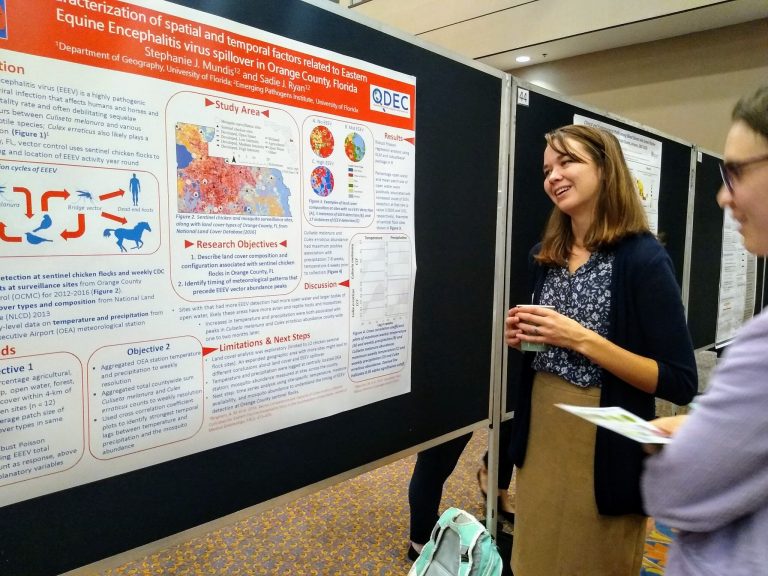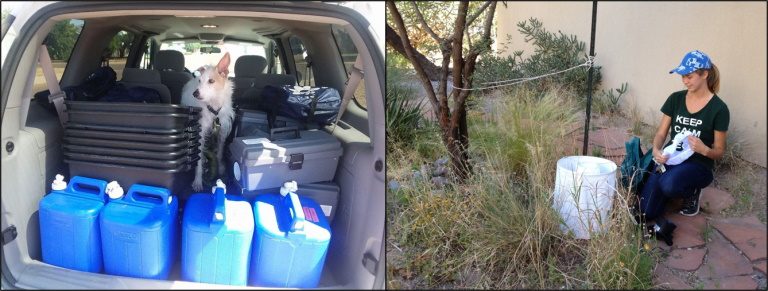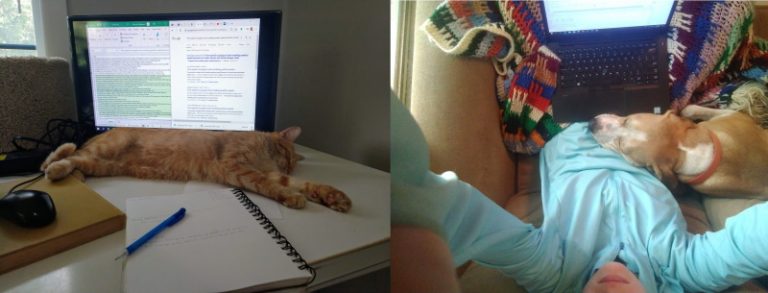 Stephanie Mundis
Stephanie Mundis
Pronouns: she/her
Quantitative Disease Ecology & Conservation Lab
Emerging Pathogens Institute
CDC Southeastern Center of Excellence in Vector Borne Diseases
Graduate Representative 2019/2020
University of Florida
Adviser: Dr. Sadie Ryan
Focus Area: Medical Geography in Global Health (MGGH)
Research Statement: My research interests are in the application of GIS to understand vector-borne transmission. My past work has focused on range expansions of Ae. aegypti and Ae. albopictus, two mosquito vectors of dengue, chikungunya, and Zika virus. Moving forward, I plan to study spatial factors affecting vector distributions, insecticide resistance, and virus transmission in order to build spatial models of current and future arthropod-borne disease transmission.
Who is she?
Stephanie Mundis is a fourth year PhD student in the Geography Department. She moved to Florida to pursue her PhD in the Quantitative Disease Ecology & Conservation Lab (QDEC Lab) and has served as a Graduate Representative for the 2019/2020 academic year.

How did she get here?
Growing up in Harvard, Illinois with high school teachers for parents, Stephanie was steeped in the value of education. Although Harvard is a small town (population of 9,447 at the 2010 census), it is remarkably cosmopolitan – hosting many international students through the AFS program which is committed to the idea that fostering international relationships fosters peace. Stephanie’s parents have hosted students from Spain, Norway, Thailand, and Hong Kong and, while in High School, Stephanie was able to spend a year abroad in Temuco, Chile.
Stephanie started a B.A. in Anthropology at the University of Illinois at Urbana-Champaign in Fall 2010. When she took an introductory course on the geography of developing countries, she was hooked and decided to add Geography as a second major. She liked using GIS and saw geography as a field that used both qualitative and quantitative methods to investigate an important and diverse array of questions. While an undergrad, she started studying socio-cultural anthropology, but became interested in physical anthropology when she worked in a human genetics lab that focused on Native American population genetics looking into the peopling of the Americas. She also began to study medical geography in a lab looking at West Nile Virus with GeoGator alumna Marilyn O’Hara. Combining her interests in genetics and geospatial science, Stephanie also spent a summer in the Genomics Research Laboratory designing a geodatabase that used genetics to determine the provenance of illegal elephant ivory. Her undergraduate thesis involved GIS and genetics – exploring the spatial relationships between different indigenous communities in Central and South America.
After completing her undergraduate studies, Stephanie took a year off school, and worked on mosquito control, as a laboratory technician in a medical entomology lab as a tech and did a 3 month GIS technician internship.
With some practical experience in hand, Stephanie was ready to move to Las Cruces, NM and enroll in a Master’s program at New Mexico State University. She was initially pursuing an interdisciplinary Master’s degree, but wound up earning a M.S. in Biology and a Master of Applied Geography on the strength of a single thesis, exploring the species distribution of Aedes aegypti mosquitoes in New Mexico. She was working with a species distribution model of data from the southern ¾ of the state – asking where are the mosquitoes and where might they be in different climate change scenarios. While pursuing her Master’s degree, Stephanie coauthored a paper looking at mosquito composition in different land cover types in Borneo based on land surface temperature.
Upon completing her Master’s degree at New Mexico State University, Stephanie applied to join the Quantitative Disease Ecology & Conservation Lab (QDEC Lab) and moved to the University of Florida in 2017.
What’s she been doing at UF?
As a GeoGator, Stephanie has been keeping up the hard work – building skills, teaching courses, doing fieldwork, writing papers, and winning scholarships.
By taking applied courses like Dr. Blackburn’s Applications of GIS for Disease Ecology and Zoonosis and Dr. Mao’s GIS Models for Public Health, Stephanie has developed her GIS and statistics toolkit and prepared to ask even more complicated geospatial health questions.
Since the beginning of her undergrad, Stephanie has wanted to be a professor. She brings that passion to the (now virtual) classroom, teaching sections of Introduction to Medical Geography as well as the Introduction to Physical Geography Lab.

As part of her work with the CDC Southeastern Center of Excellence in Vector Borne Diseases, Stephanie has been able to get into the field, studying local scale variability of insecticide resistance in Aedes aegypti with the Orange County Mosquito Control District. This fieldwork has come to a halt with the COVID-19 pandemic, but she continues to work with data from Orange County, working on a local scale project studying mosquito abundance and climate, using data that has already been collected from sentinel chickens in Orange County.
So far, Stephanie has published two papers since she’s been in the department – Seasonal and geographic variation in insecticide resistance in Aedes aegypti in southern Ecuador and Spatial variation in the frequency of knockdown resistance genotypes in Florida Aedes aegypti populations. These are building toward her dissertation, Spatial Variation in Mosquito Populations that Mediate Vector-Borne Disease Risk.
Stephanie has also received the T.W. Miller Scholarship from the Florida Mosquito Control Association as well as a US Geospatial Intelligence Foundation Graduate Student for an essay exploring how mosquito borne disease is a threat to health and security.
How has she been holding up during the pandemic?
As an introvert, Stephanie is happy to not leave her house – it’s her favorite place. She has been okay with staying home as much as possible, spending time reading, cooking, and going for walks with her dogs.

LinkedIn
ResearchGate
Follow Stephanie on Twitter
Credit: Mike Ryan Simonovich